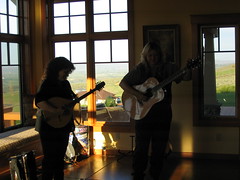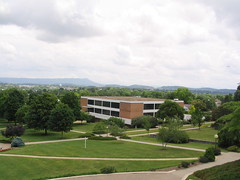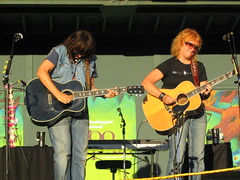Speakers: Nicholas Schiller (Washington State University, Vancouver) and Carole Svensson (University of Washington, Tacoma)
We’re not getting any younger, but our students are. We think of new technologies as ways to deliver old ideas, but really we need to mix it up.
Gaming literacy is a way of looking at the media of video games and interactive media through the eyes of the designers and the players. It’s not helpful to view this as a zero sum game – it’s not about competing with reading literacy.
Games are now mainstream media. They are more significant to our students than they were for the generations that came before them (i.e. most of us librarian types). Video games are viable competitors with movies, television, and popular music. All indicators show that the population of gamers is only going to get larger over time.
We don’t need to be advocates of games in order to understand our users that are gamers. We need to be literate in this new media in order to connect with and serve those users. If we don’t understand them, then we are not equipped to either critique or use gaming media.
How do we think intelligently about “childish” things? Separate the content from the format and use the analytical tools we already know (like Deb Gilchrist’s 5 questions for outcomes-based design or Adler and Van Doren’s How to Read a Book) and apply them to new media.
Think about the experiences of using character based interfaces and a GUI like III’s Millennium. The two experiences are very different, but the content is the same.
The point of studying gaming behavior is rarely the context of the games. Games are complex information systems. They must teach players to evaluate information and make informed choices in order to succeed. Games that fail to do this well do not sell. Being frustrated is not fun.
We want students to understand that their information needs are complex and require complex tools like scholarly bibliographic indexes in order to meet those needs. However, most of our users think that their information needs are simple and instead gravitate towards simpler tools like Wikipedia and Google.
MMORPGs like World of Warcraft (WoW) have an emphasis on collaboration and apprenticeship. Working with friends meant that the experience was less frustrating as a new user. In library instruction classes, allowing students to self-select their groups for team exercises will guarantee groups that are more comfortable with each other from the get-go.
Collaborative games also de-emphasize authority distinctions and emphasize peer knowledge. Peers are the best sources for information in games, rather than the help document or support tech. The average time that a peer responded in WoW was 32 seconds. What’s your IM/email reference response time? Also, for peer knowledge to work well, we need to have FAQs or knowledgebases that are built on by student knowledge over time.
In the games, each level builds on the next one, which is like how we try to teach library stuff. However, in the game, it tends to be more fun. Game players are not tempted to skip forward because the games are structured so that you only see the part of the world that you’ve mastered. When game players get to the point where they need additional information, it’s desired rather than being overwhelming. In teaching library tools, focus on fewer things until users get comfortable with them, and then show them more.
Players build resources for helping each other and developing community. Do we see that happening with EBSCOhost? No.
When you fail in WoW, you know what to do. Find someone to help you or look for information in the user-created content online. When students fail in the classroom or library, do they know what to do? Building expertise and community allows them to understand that keeping at it will result in success.
Gating is a mandatory pause in the action of a game that requires demonstration of skill acquisition. In the classroom, design research assignments to require identification of and reflection on research choices, or create annotated bibliographies.
Why doesn’t Laura Croft obey Professor Van Croy? Players learn that sometimes if they do what the instructions tell them to not do, they get rewarded. By exploring the game outside of the small boundaries, they learn more about what is there. In the classroom, this translates to discovery based learning. Pique their curiosity and then let them discover the advanced tools in a resource.
As in higher education, the more you “level up,” the more you need help from experts. Experienced librarians are better equipped to say “I don’t know” and refer the information seeker to experts. With each level of research, you have to keep at the process until you find the answers you seek.
If we can help our students see when they’re playing games, they are actually functioning on a fairly high level on Bloom’s Taxonomy. Then, we can help them see that their complex and involved academic research is not only something they are capable of doing, but it’s something that they’ve already done while playing games, as long as we keep our focus on the process of games and not the zombies and vampires.
Students don’t have trouble figuring out how to use our tech, but they don’t understand why they would want to use it. So, instead of teaching them how to use the catalog, we should be instilling in them the motivation to use it and they’ll figure out the quirks on their own. Saying “this is how you type in a text box” is like saying “let’s talk about breathing today.”




